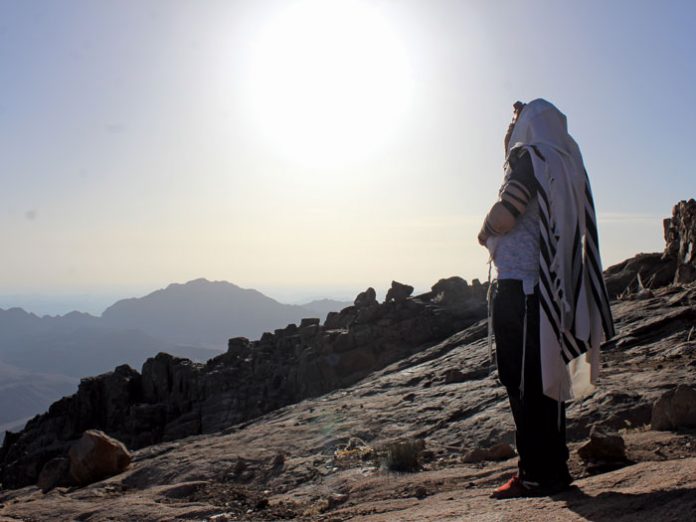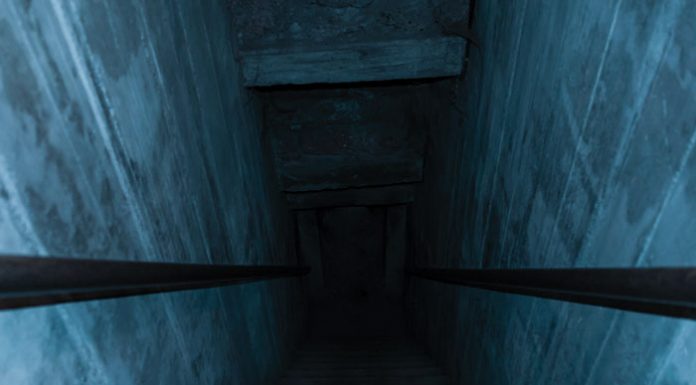Ever since my late teenage years I’ve been wanting to visit Har Sinai. Without a doubt, there is hardly a place of more symbolic interest than Har Sinai. Countless mefarshim, researchers and scientists have overturned libraries, racked their brains and gone on expeditions in search of the famed mountain. While there is no mesorah as to where Har Sinai is located, there are many clues that point to an estimated location. Most lead to the Sinai Peninsula, the vast desert area between the Mediterranean and Red Seas, in northeastern Egypt.
This past December, while flying home from Jeddah, Saudi Arabia, via Istanbul, Turkey, my Saudia Airlines flight flew over the Gulf of Aqaba and the Sinai Peninsula. I was exhausted from my trip and trying to catch up on some badly needed sleep, but to no avail. The flight information screen in front of me caught my eye. The map showing our flight’s progress displayed two simple words which made me sit straight up in my seat and peer out the window: “Mt. Sinai.” After all these years, I was finally able to see the legendary mountain with my own eyes, and I immediately took out my camera and started snapping pictures from my bird’s eye view above the Sinai. After passing over the area, I slipped back into my seat and dozed off, but not before making a note to visit Har Sinai in the days leading up to Shavuos.
To Travel or Not to Travel?
Egypt is a bit of a complicated place at the moment. While generally considered safe, there are incidents that throw that designation into doubt. In February of this year, three Egyptian security personnel were killed by a suicide bomber in central Cairo, and in May, 16 people were injured in an IED attack on a tourist bus near the Giza Pyramids.
These sporadic attacks have practically ruined Egypt’s once bustling tourist industry. According to the US State Department, Egypt is listed as a “Level 2” destination, meaning “exercise increased caution,” the same level accorded both Israel and Saudi Arabia. There is one difference, however. Egypt’s Sinai Peninsula has its own travel advisory listed at Level 4—“Do not travel”—with the only exception being the Sinai beach resort town of Sharm El Sheikh.
While I usually take travel advisories seriously, I’ve come to notice that the State Department often makes generalizations. After talking to some of my contacts in the region, I learned that while northern Sinai is truly a dangerous place, inhabited by ISIS affiliated fighters, southern Sinai is calm and frequented by tourists. Getting to Mt. Sinai from Israel would not require traveling through the dangerous north, so I felt fairly comfortable doing it. I also checked with daas Torah, and went to a few gedolim for brachos, as I usually do before my trips to exotic places.
It’s interesting to note that the Israeli government also strongly warns its citizens against traveling to Sinai, but that didn’t stop over 40,000 Israelis from pouring over the border during Pesach vacation. Most Israelis disregard their government’s warnings as a cheap effort to keep the lucrative tourist dollars on their own side of the border in sunny Eilat, where everything costs double or triple what it does in the Sinai. With all this in mind, I decided to make the trip.
Though I probably could have handled the travel arrangements myself, I enlisted the help of an Israeli travel agency that specializes in overland trips to Egypt and Jordan from Israel. The plan was to take a bus from Yerushalayim to Eilat, and then cross over to Egypt at the Taba Border Crossing. From there, a driver would take me to the foot of Mt. Sinai, where I’d be staying at a Bedouin hostel until the time for my climb up the mountain. When I asked a close friend if he’d be interested in joining me for the expedition, he declined, saying that in his mind, Har Sinai was a place too sacred for a casual visit. “When I think of Har Sinai,” he said, “I don’t want to be able to say, ‘Yeah, I hiked that mountain.’” I understood my friend’s point, but in my mind, I saw things very differently. For me, visiting a place and seeing it with my own eyes helps me connect in a very personal way.





















